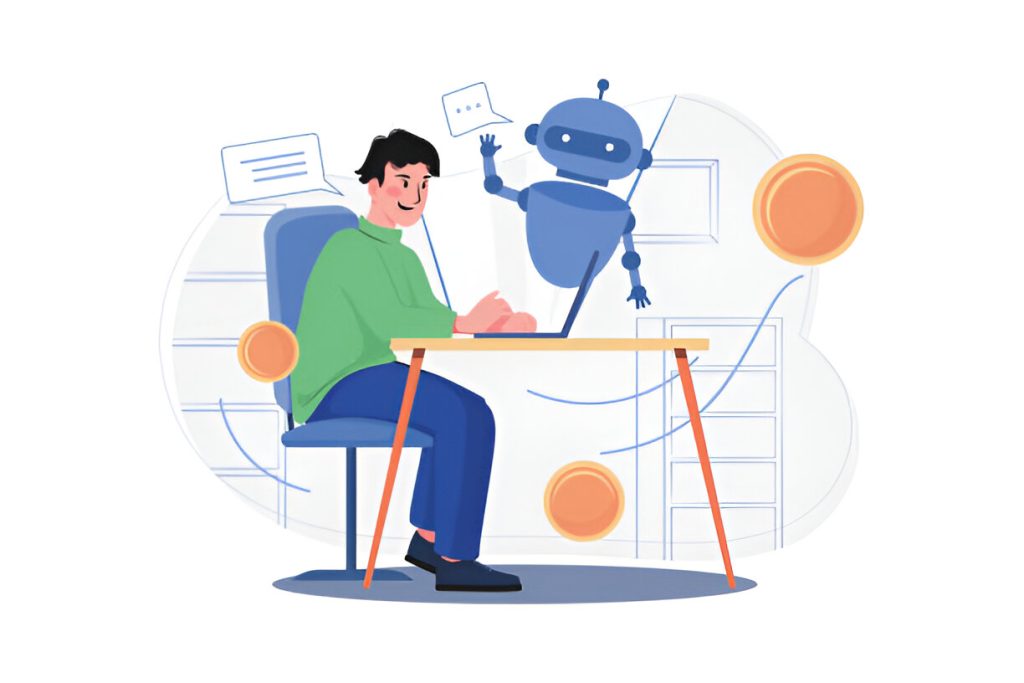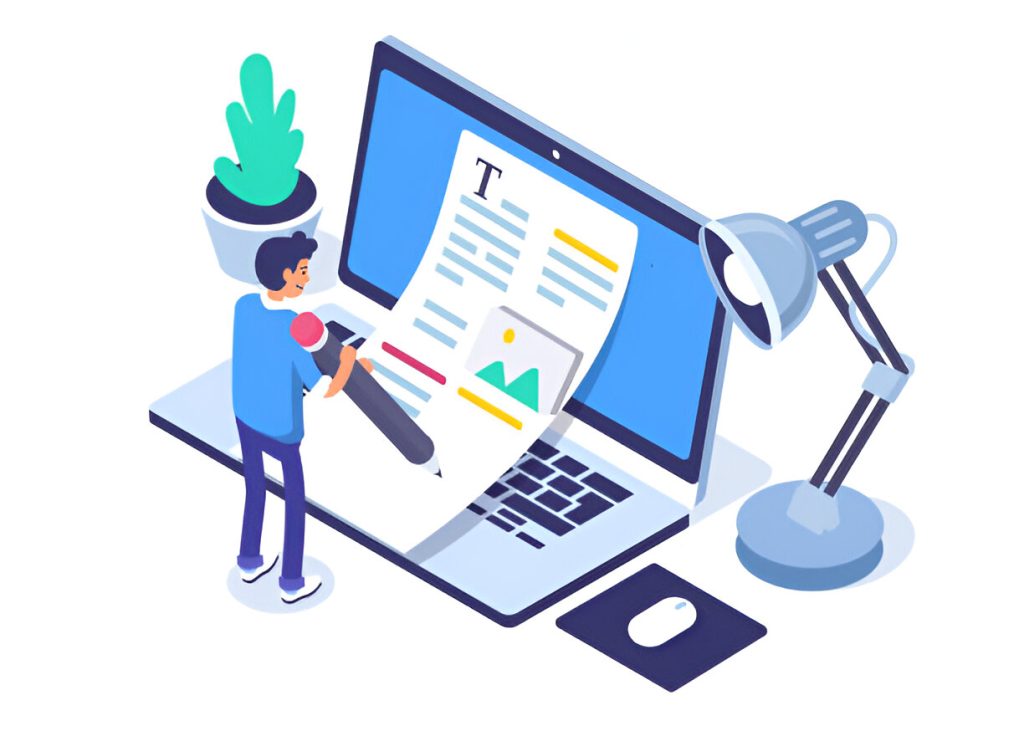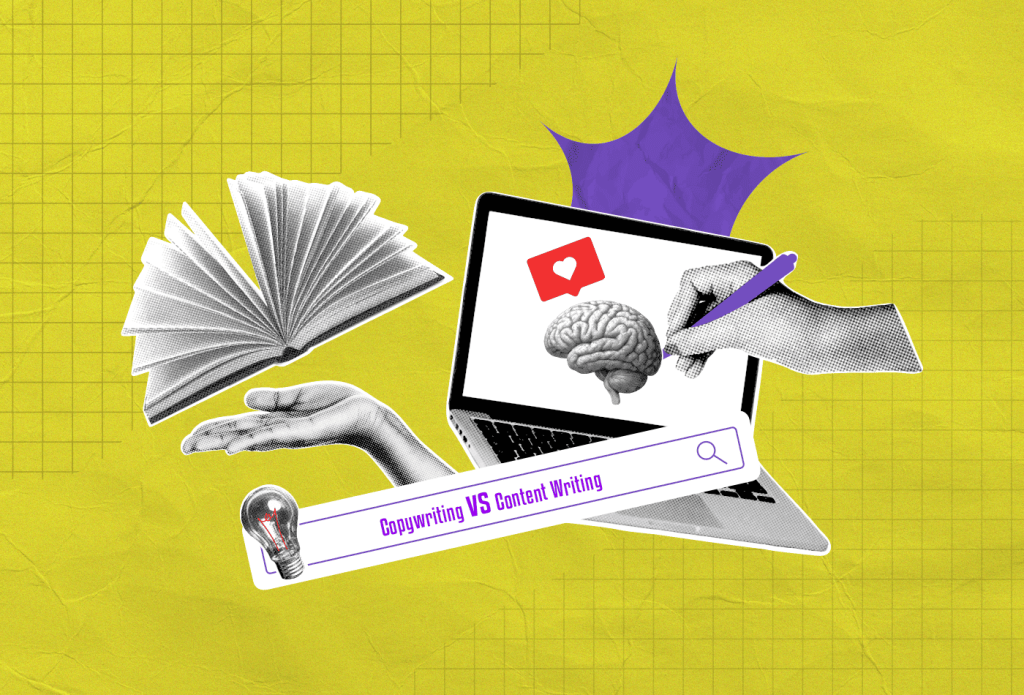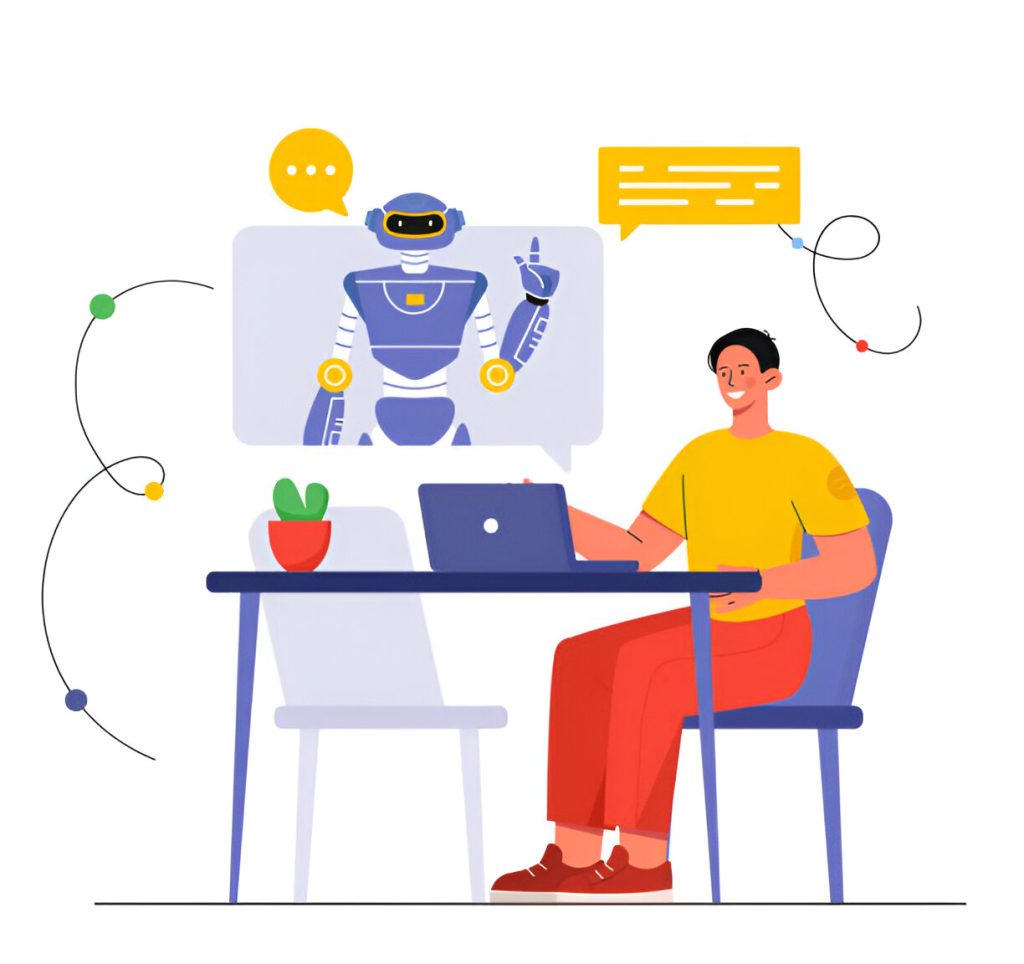You like writing but don’t like to type? Got the idea but feel too lazy to elaborate on it on paper? Well, you’re not the only one. Generating content organically obviously has its own perk and authenticity but with new technologies swooping in, AI-generated blogs prove to be effective and efficient.
They save time, increase productivity, and with the right prompts you get the best of what you had in mind. The question is what would be good for you?
Read this blog and figure out for yourself if AI-generated blogs are your ride or not!
1. What is AI-Generated Content?
Any data, image, audio, music or basically any digital data made from artificial intelligence using human prompts are AI-generated content.
When it comes to blogging, it involves using AI writing tools to deliver articles, social media posts, or even entire AI-generated blogs. Did you know a recent McKinsey survey exhibited that 22% of participants regularly use generative AI for tasks?
These tools utilize natural language processing (NLP) and machine learning models to understand context and generate human-like text based on the data they’ve been trained on.
2. How Does AI Generate Content? The Process Behind AI Writing Tools
So, when we talk about AI writing tools, they are super smart algorithms that understand, create, and play around with human language.
They soak information and data from books, articles, websites, and basically anything else that’s written. And once they’re full of all this knowledge, they use it to create new content.
Data Training
Wondered how an AI-generated blog could read so smoothly, almost as if you wrote it.
It all begins with data training. AI soaks up vast amounts of information, AI learns language patterns, grammar rules, and the subtle nuances of how we communicate from books, articles, and all sorts of content from the internet.
This extensive “reading” enables the AI to understand how sentences flow and how ideas connect, laying the groundwork for producing coherent and engaging content.
Natural Language Processing
The secret behind the AI’s ability to understand and generate text is something called Natural Language Processing, or NLP for short. NLP helps comprehend context, interpret meanings, and catch onto idioms and expressions that make language so humanized.
AI can pick up on the tone, whether it’s meant to be serious, funny, or somewhere in between, making the content more relatable to you.
User Input Processing
When you enter a prompt on an AI writing tool, you’re basically starting a conversation. You provide a prompt or a topic, and the AI needs to understand exactly what you’re looking for.
This is where user input processing comes into play. AI takes your instructions, breaks them down, and understands key points and intent. This step ensures that the content generated is aligned with your expectations and needs.
Content Generation
Now, here’s where creativity starts to drop. Analysing the given instructions AI starts generating content.
You can ask for an informative article, a story, or a how-to guide, AI produces text that matches the desired style, tone, and subject matter.
With AI your content comes out to be engaging and on point, so you get something that’s not just well-written but also interesting to read.
Machine Learning
Behind all these processes is the engine of machine learning, continuously working to make the AI smarter and more effective.
Every time AI generates content or receives feedback, it learns and improves. This constant learning helps the AI produce more accurate, coherent, and high-quality content over time.
So anytime you get a better result than what you got the last time– it’s the result of its constant improvement and refinement.
3. Pros and Cons of AI-Generated Content
Pros of AI-Generated Content
1. Time-Saver Extraordinaire
One of the biggest perks is the amount of time it can save. Whenever you need an article or a blog in a pinch—AI can whip up content!
This speed can be a game-changer for businesses and individuals who need to produce content quickly.
2. Cost-Effective Solution
You are on a cut? And hiring a writer is obviously expensive.
AI-generated content can reduce costs by handling the bulk of the writing, allowing you to allocate your budget to other important areas.
3. Consistency is Key
AI can maintain a consistent tone and style throughout the content.
If you need a uniform voice across multiple pieces, AI can deliver that steady consistency without the variations that might come from different human writers.
4. Scalable Content Production
Need ten articles? Or maybe a hundred? AI can scale up content production without breaking a sweat.
This scalability is perfect for businesses looking to expand their content marketing efforts rapidly.
5. Idea Generation and Overcoming Writer’s Block
Sometimes staring at a blank page is the hardest part. You can literally generate ideas or starting points, making it easier to get the creative juices flowing.
It can suggest topics, headlines, or even draft sections to build upon.
Cons of AI-Generated Content
1. Lack of Human Touch
No AI has real human emotions or experience. And so it will lack the warmth, empathy, or personal stories that make writing truly personal with readers.
An AI-generated blog might not capture the subtle nuances that a human writer would.
2. Quality and Originality Concerns
AI often works by analyzing existing content to generate new text, which can sometimes lead to generic or unoriginal writing.
It might not provide the deep insights or unique perspectives that come from a human’s creativity and critical thinking.
3. Possible Errors and Inaccuracies
AI doesn’t understand content the way humans do. It might produce text that’s grammatically correct but factually inaccurate or misleading.
Without proper oversight, these mistakes can slip through and affect the credibility of your content.
4. Ethical and Plagiarism Issues
Ai learns from what is already available on the internet causing a risk of unintentional plagiarism.
It might generate content that’s too similar to its sources, leading to potential ethical and legal concerns. Ensuring originality can be a challenge.
5. Lack of Emotional Connection
Great writing often connects with readers on an emotional level. AI might struggle to evoke emotions or adapt to the cultural contexts that enrich content.
This can make the writing feel flat or disengaging compared to something crafted by a human.
4. Is AI Content Good for SEO?
The Upside of AI Content for SEO
With the quick response of AI tools, you can always have new content handy. You can always keep your website updated with fresh content, and as you know search engines love new and updated content, AI generated blog can help to cover a wide range of topics, targeting various keywords that can attract more visitors to your site.
Also, AI can assist in optimizing content for specific keywords and phrases. It can naturally incorporate these into your articles, you might improve your chances of ranking higher in search results. Plus, AI can analyze large amounts of data to identify trending topics, helping you stay ahead of the curve.
The Potential Downsides
However, there are some things to watch out for. AI might produce content that’s grammatically correct but steps back in depth or the human touch. Search engines, like Google, are getting smarter at recognizing high-quality content that provides real value to users.
Moreover, there’s a risk that AI-generated content might be too generic or even duplicate existing content, which can turn all your SEO efforts in vain. Search engines penalize websites that have duplicate or low-quality content because they want to provide the best experience for users.
Google’s Stance on AI Content
Google’s guidelines emphasize the importance of creating content for people first, not search engines. They focus on the quality, relevance, and originality of content.
If an AI generated blog doesn’t meet these criteria, it could negatively impact your SEO rankings.
Finding the Balance
So, is AI content good for SEO? It can be if used with the right brains. Combining AI with human creativity might be the best approach. You can use AI to generate ideas or drafts and then have a human editor refine the content, adding insights, personal experiences, and that engaging touch that readers appreciate.
5. Can AI-Generated Content Rank on Google?
Can AI-generated content rank on Google? Google has certain key factors when it ranks content, even AI-generated content has to align with these guidelines to perform well in search results.
Quality and Relevance
Google focuses on providing users with informative, accurate, and relevant content.
- Informative and Accurate Content: Your content should thoroughly address the topic at hand. Even if AI helps generate the initial draft, it’s crucial to ensure all facts are correct. AI might sometimes produce outdated or incorrect information, so double-checking is essential.
- Relevance to User Queries: The content must directly answer the questions users are asking. This means understanding the intent behind search queries and providing clear, concise, and helpful answers. Staying on topic and providing value increases the chances of your content ranking higher.
Originality
Google places a high value on unique content that offers new insights.
- Avoiding Duplicate Content: Copying or slightly rewording existing content can lead to penalties. AI-generated content should be original and not just a rehash of what’s already available online.
- Offering Unique Insights: Try to include fresh perspectives, new data, or original research. Even with AI assistance, adding unique value will set your content apart from others.
User Experience
Google also considers how engaging and user-friendly your content is.
- Engaging and Easy to Read: The content should be written in clear, simple language that’s easy for readers to understand. Breaking up text with headings, bullet points, and short paragraphs can make it more digestible.
- Formatting and Design: A well-structured article with appropriate formatting enhances readability. Including relevant images, infographics, or videos can also improve user engagement.
Google’s Algorithms and Low-Quality Content
Google’s algorithms are designed to detect and demote low-quality or spammy content.
- Unedited AI Text Risks: AI-generated content that’s unedited might contain grammatical errors, awkward phrasing, or irrelevant information. This can lead to a poor user experience, which Google’s algorithms aim to avoid.
- Thin Content: Content that lacks depth or doesn’t provide substantial value to the reader may be flagged as thin content, negatively impacting your rankings.
6. How Do I Catch AI-Generated Content?
Detecting AI-generated content can be challenging but not impossible. Indicators include:
Repetitive Language
First off, pay attention to repetitive language. Sometimes, AI tends to repeat certain phrases or sentences more than a human writer would for example, ‘in the world of’, ‘ever wondered’, ‘let’s face it’ etc.
Observing these phrases again and again could be a hint. It’s like when someone keeps using the same word in every other sentence—it starts to stand out.
Lack of Depth
Another thing to look for is a lack of depth. AI-generated content often skims the surface of a topic without diving deep. You might get basic information, but it doesn’t go into detailed analysis or offer unique insights.
If the content feels a bit generic or doesn’t satisfy your curiosity, it might be because it’s not crafted by a human with expertise or personal experience.
Inconsistencies
Inconsistencies can also be a giveaway. This could be sudden changes in tone, like starting off formal and then switching to a casual style without any reason. Or maybe the topic shifts abruptly, and the flow doesn’t make sense.
Humans usually have a logical progression in their writing, so when the content jumps around, it might be a sign of AI involvement.
Odd Phrasing
Sometimes, you’ll come across sentences that just sound… off. Maybe the grammar is correct, but the way the words are put together isn’t how people typically speak or write.
These odd phrasings can make the text feel unnatural. It’s like when you use a translation app, and the result is technically correct but doesn’t quite capture the nuances of the language.
Detection Tools
Software like OpenAI’s AI text classifier can analyze text and give you an idea of whether it was likely written by AI.
While these tools aren’t perfect, they can be pretty useful if you need to make an informed guess. Just keep in mind that AI is getting better all the time, so detection isn’t always foolproof.
7. Best AI Writing Tools in 2024 for Content Creators
These tools are designed to boost your productivity, spark creativity, and enhance the quality of your content.
- ChatGPT by OpenAI is great for brainstorming ideas, drafting articles, and crafting engaging social media posts. Its strong contextual understanding leads to natural and coherent content.
- Jasper, formerly known as Jarvis, helps you create high-quality content efficiently. With templates and customization options, it’s ideal for marketers aiming to streamline content production without sacrificing quality.
- Copy.ai is perfect for copywriters focusing on short-form content like social media posts and advertisements. It’s an easy-to-use tool that simplifies repetitive writing tasks, making it useful for businesses needing quick marketing material.
- Writesonic excels at generating blog posts, ads, and landing pages using advanced algorithms to create engaging content. For content marketers wanting to produce compelling articles quickly, it’s a valuable assistant.
- Rytr is known for its user-friendly interface and ability to produce high-quality copy across various formats. It’s straightforward to use, ideal for copywriters seeking a fuss-free writing assistant.
8. Key Takeaways
So, to wrap things up, you have to find the correct balance. Combining the efficiency of AI with your own creativity leads to the best results in content creation. Always prioritize quality over quantity by reviewing your AI-generated blog for accuracy, originality, and relevance.
While AI can help with SEO, your personal insights are still crucial to fully meet search engine standards. And don’t forget to stay updated on the latest advancements in AI writing tools so you can make the most of them in your content strategy.






